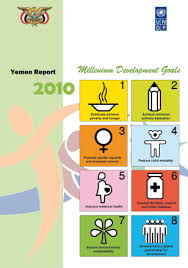The Millennium Goals: A Global Agenda for Sustainable Development
The Millennium Development Goals (MDGs) were a set of eight international development goals established following the Millennium Summit of the United Nations in 2000. These goals aimed to address various aspects of global poverty, inequality, education, health, and environmental sustainability by the target year of 2015.
The Eight Millennium Development Goals:
- Eradicate extreme poverty and hunger
- Achieve universal primary education
- Promote gender equality and empower women
- Reduce child mortality
- Improve maternal health
- Combat HIV/AIDS, malaria, and other diseases
- Ensure environmental sustainability
- Develop a global partnership for development
While significant progress was made towards achieving these goals by 2015, there were challenges and disparities in implementation across different regions and countries. Following the conclusion of the MDGs, the United Nations adopted the Sustainable Development Goals (SDGs) in 2015 as a new universal agenda for sustainable development.
The Sustainable Development Goals (SDGs):
The SDGs build upon the achievements and lessons learned from the MDGs while addressing new challenges such as climate change, inequality, innovation, sustainable consumption, peace, and justice. With 17 goals and 169 targets, the SDGs provide a comprehensive framework for countries and stakeholders to work towards a more sustainable future by 2030.
From ending poverty in all its forms to ensuring quality education for all and promoting sustainable economic growth, the SDGs encompass a broad spectrum of social, economic, and environmental objectives that require collective action at local, national, and global levels.
As we strive towards achieving the Sustainable Development Goals by 2030, it is essential to reflect on the legacy of the Millennium Development Goals and their impact on shaping the global development agenda. By working together towards common objectives guided by these shared goals, we can create a more inclusive, equitable, and sustainable world for present and future generations.
Understanding the Millennium Development Goals: Key Questions and Answers
- What are the 8 Millennium goals?
- What are the 21 targets of MDG?
- What are the 8 global health and the Millennium Development Goals?
- What is the meaning of Millennium goals?
What are the 8 Millennium goals?
The 8 Millennium Development Goals (MDGs) were established following the United Nations Millennium Summit in 2000 to address key global challenges by 2015. These goals aimed to eradicate extreme poverty and hunger, achieve universal primary education, promote gender equality and empower women, reduce child mortality, improve maternal health, combat HIV/AIDS, malaria, and other diseases, ensure environmental sustainability, and develop a global partnership for development. While significant progress was made towards these goals, they were succeeded by the Sustainable Development Goals (SDGs) in 2015 as a more comprehensive framework for sustainable development beyond 2015.
What are the 21 targets of MDG?
The Millennium Development Goals (MDGs) consisted of eight overarching goals, each with specific targets to be achieved by 2015. While there were 21 targets associated with the MDGs, they were spread across the eight goals focusing on eradicating poverty, improving education, promoting gender equality, reducing child mortality, enhancing maternal health, combating diseases like HIV/AIDS and malaria, ensuring environmental sustainability, and fostering global partnerships for development. These targets served as measurable indicators to track progress towards the broader objectives of the MDGs and guide international efforts towards addressing key global challenges related to poverty alleviation and sustainable development.
What are the 8 global health and the Millennium Development Goals?
The Millennium Development Goals (MDGs) included a specific focus on global health, with three out of the eight goals directly related to improving health outcomes worldwide. These health-related goals aimed to reduce child mortality, improve maternal health, and combat major diseases such as HIV/AIDS, malaria, and other illnesses. By prioritizing these areas, the MDGs sought to address critical health challenges affecting vulnerable populations and promote sustainable development through enhanced healthcare access, prevention strategies, and healthcare system strengthening initiatives. The global community’s commitment to achieving these health-related goals underscored the importance of investing in public health interventions and ensuring equitable healthcare services for all individuals, regardless of their socio-economic status or geographic location.
What is the meaning of Millennium goals?
The Millennium Development Goals (MDGs) were a set of eight internationally agreed-upon objectives established following the Millennium Summit of the United Nations in 2000. These goals aimed to address key global challenges such as poverty, education, health, gender equality, and environmental sustainability by the target year of 2015. The MDGs served as a blueprint for international cooperation and focused efforts to improve the lives of people around the world. They represented a shared commitment among nations to work towards common objectives and set measurable targets to track progress in areas vital for human development and well-being.

